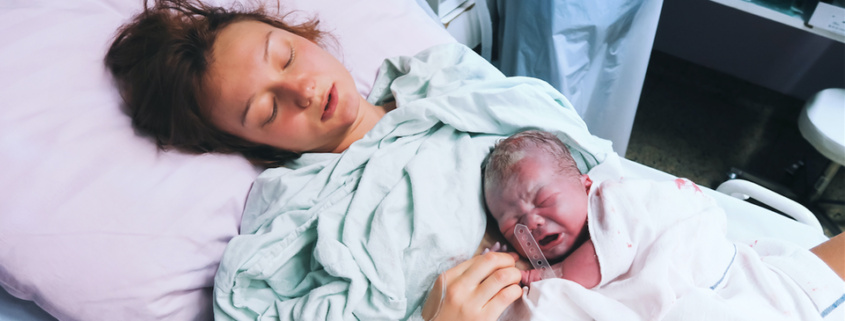What Happens to Your Body After Giving Birth
Many things are happening in your body right after you have a baby. During pregnancy, your body changed a lot. It worked hard to keep your baby safe and healthy. Now that your baby is here, your body is changing again. Some of these changes are physical, like your breasts getting full of milk. Others are emotional, like feeling extra stress.
Things that happen to your body after birth:
Afterbirth pains:
Afterbirth pains are belly cramps you feel as your uterus (womb) shrinks back to its regular size after pregnancy. The cramps should go away in a few days. Right after you give birth, your uterus is round and hard and weighs about 2½ pounds. By about 6 weeks after birth, it weighs only 2 ounces.
Some women have pains for a few days after birth. After-birth pains can feel like labour pains or mild to moderate period pain. This pain comes from your uterus contracting towards its pre-pregnancy size. They are more common in women who have had other babies than in women who have just had their first baby.
You may also experience Shivering or getting the shakes. This can happen right after delivery and it can also happen during the transition stage of labour.
What you can do about this is ask your provider about over-the-counter-medicine you can take for pain. Over-the-counter medicine is the medicine you can buy without a prescription from your provider.
Perineum soreness:
The perineum is the area between your vagina and rectum. It stretches and may tear during labor and vaginal birth. It’s often sore after giving birth, and it may get even sore if you have an episiotomy. This is a cut made at the opening of the vagina to help let your baby out.
What you can do:
- Do Kegel exercises. These exercises strengthen the muscles in the pelvic area. To do Kegel exercises, squeeze the muscles that you use to stop yourself from passing urine (peeing). Hold the muscles tight for 10 seconds and then release. Try to do this at least 10 times in a row, three times a day.
- Put a Swelling on ice. Put a cold pack on your perineum. Use ice wrapped in a towel. Or you can buy cold packs that you freeze in your freezer.
- Sit on a pillow or a donut-shaped cushion.
- Soak your Bottom. Just fill the tub with a few inches of tepid water and hang out there for about 20 minutes, three to four times a day. It decreases swelling, cleans the area so there’s less risk of infection and generally soothes discomfort,
- Wipe from front to back after going to the bathroom. This can help prevent infection as your episiotomy heals.
- Witch Hazel up. Another way to find sweet relief from uncomfortable hemorrhoids? Witch hazel, an herbal remedy with tannins and oils that can help reduce inflammation.
Vaginal discharge:
After your baby is born, your body gets rid of the blood and tissue that was inside your uterus. In the week or so after birth, you’ll bleed from your vagina. The blood is called ‘lochia’. It is bright red and heavy and might have clots. This is normal, but if you pass a clot bigger than a 50 cent piece or notice a bad smell, tell your midwife. You can expect to see lochia for 4 to 6 weeks. Over time, the flow gets less and lighter in color. You may have discharge for a few weeks or even for a month or more.
Breast engorgement:
This is when your breasts swell and are painfully overfull of milk. It usually happens a few days after giving birth. Your breasts may feel tender and sore. The discomfort usually goes away once you start breastfeeding regularly. If you’re not breastfeeding, it may last until your breasts stop making milk, usually within a few days.
Breast engorgement usually occurs when a mother makes more milk than her baby uses. Your breasts may become firm and swollen, which can make it hard for your baby to breastfeed. When your baby suddenly starts breastfeeding less than usual.
Nipple pain:
If you’re breastfeeding, you may have nipple pain during the first few days, especially if your nipples crack. During pregnancy, nipple pain is generally caused by hormones. Although nipple pain in the early days (usually peaking at 3-7 days postpartum) is common, it is not necessarily normal. A common problem leading to sore nipples is an ineffective latch.
Urinary problems can happen after giving birth:
In the first few days after giving birth, you may feel pain or burning when you urinate (pee). Or you may try to urinate but find that you can’t. Sometimes you may not be able to stop urinating. This is called incontinence. It usually goes away as your pelvic muscles become stronger again.
Urine may leak out of the bladder when there is additional pressure exerted, for example, when a pregnant woman coughs or sneezes. After pregnancy, incontinence problems may continue, because childbirth weakens the pelvic floor muscles, which can cause an overactive bladder.
Emotional changes:
You might find that you go up and down a lot, from being happy to feeling very down. That’s normal.
Your baby didn’t come with a set of instructions. You may feel overwhelmed trying to take care of her. Taking care of a baby is a lot to think about.
Many women feel teary, irritable or more emotionally sensitive than usual a few days after giving birth. These feelings are known as the baby blues, and they’re normal, too. It’s a physically and emotionally challenging time. Most women feel better a few days after birth with support and understanding from those around them. If you don’t feel better after 2 weeks, please seek help.
You might find a lot of people want to come to see you, and especially to see your baby. That’s great, but it can be tiring for you both. It’s up to you how many visitors you have, and when. If you’re feeling exhausted, you can always avoid visitors for a while so that you can rest.
“Birth is not only about making babies. Birth is about making mothers — strong, competent, capable mothers who trust themselves and know their inner strength.”
—Barbara Katz Rothman
The information, including but not limited to, text, graphics, images and other material contained on this website are for informational purposes only. The purpose of this website is to promote broad consumer understanding and knowledge of various health topics. It is not intended to be a substitute for professional medical advice, diagnosis or treatment. Always seek the advice of your physician or another qualified healthcare provider with any questions you may have regarding a medical condition or treatment and before undertaking a new health care regimen, and never disregard professional medical advice or delay in seeking it because of something you have read on this website.




Leave a Reply
Want to join the discussion?Feel free to contribute!